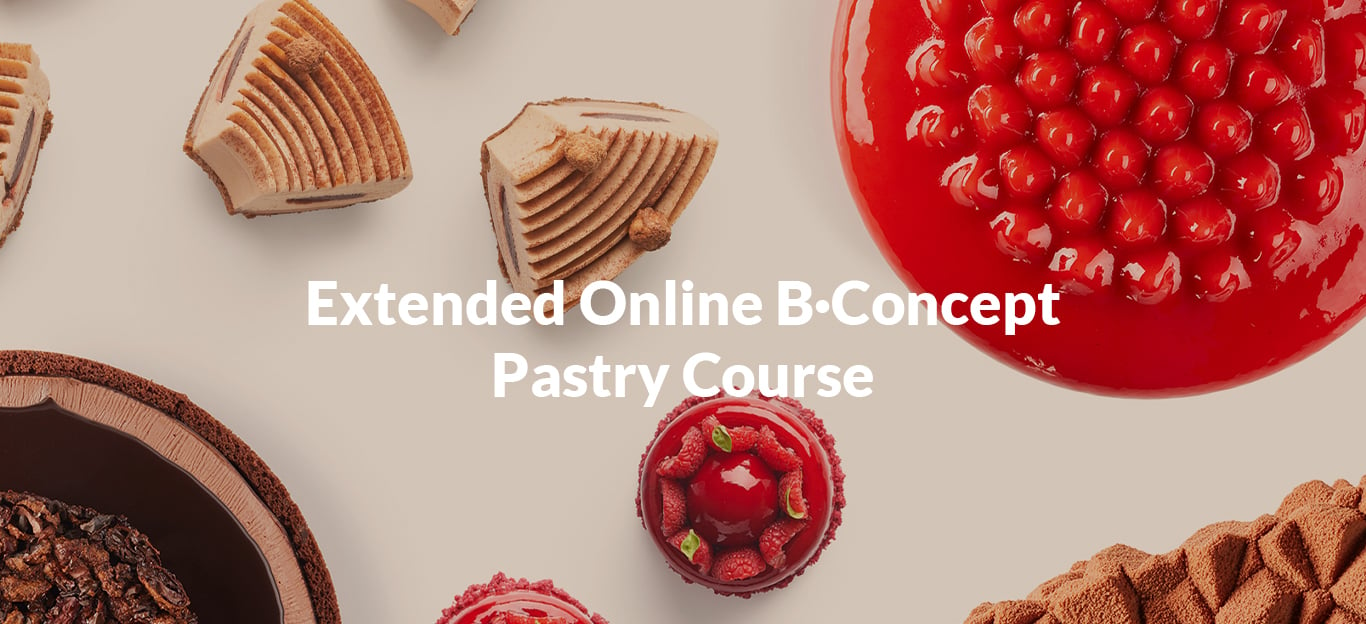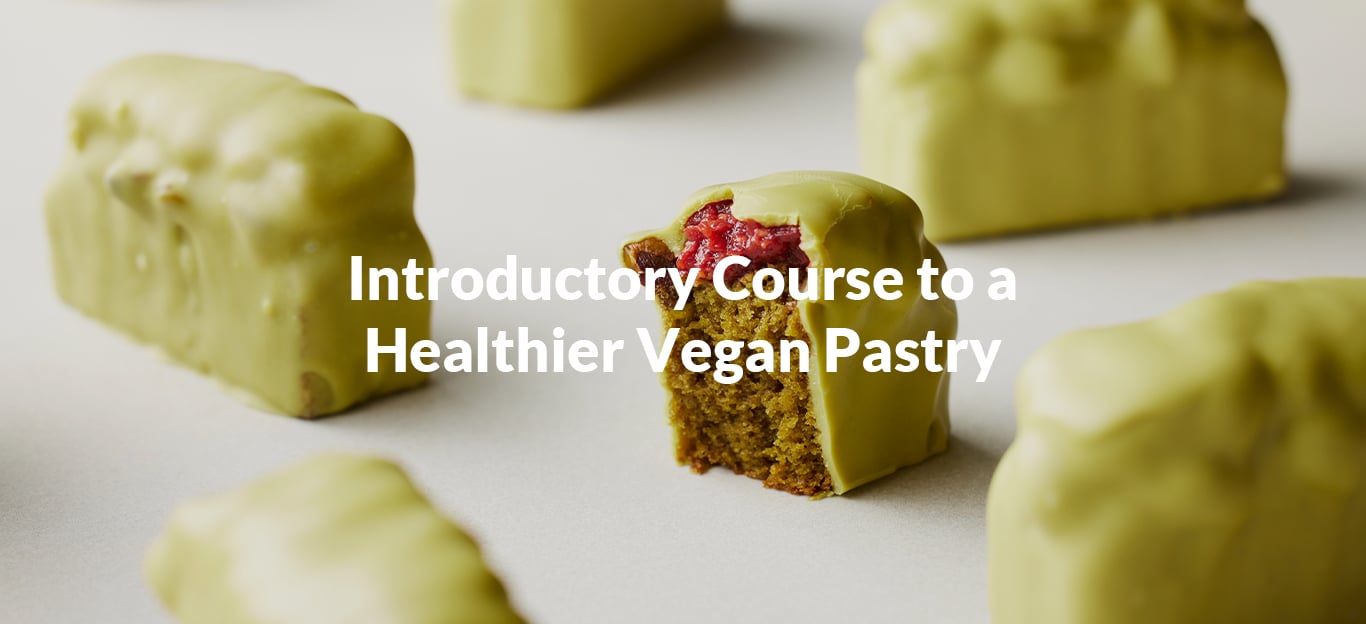
Back to school: More technical books for pastry chefs
When almost one year ago we have published our selection of eight technical books for pastry chefs we didn’t expect that this post would be so popular. Then again, one of the most recurring questions in our courses is the one about theory books that we recommend for pastry chefs who wish to expand their theoretical knowledge.
Below you will find a new selection of eight books that we consider helpful for pastry chefs and/or bakers who wish to dig deeper into common pastry ingredients, modern texturizing agents or the principles behind flavour pairings (for books for chocolatiers or ice-cream makers, check our previous post).
And if after reading you are still hungry for more knowledge, remember that the first and the second part of our Extended Online B·Concept Pastry Course is fully dedicated to pastry theory.
1. La scienza della pasticceria. La chimica del bignè

This unassuming book by Dario Bressanini is actually an invaluable source of knowledge on all basic pastry ingredients: sugars, eggs, dairy products, flour, etc.
This book’s strongest point is that for each ingredient it focuses on the particular role it fulfils in pastry preparations. Written by a chemist, but in a very accessible and easy language, it is a perfect book to start investigating the scientific side of pastry.
DATA SHEET
Title: La scienza della pasticceria. La chimica del bignè (Eng.: The science of pastry)
Author: Dario Bressanini
Publisher: Edizioni Gribaudo (Eng.: Editorial Gribaudo)
Year: 2014 (Eng.: 2017)
ISBN: 9788858012307 (Eng.: 9788417127077)
Pages: 309 (Eng.: 200)
Language: Italian, Spanish
2. Les nouvelles bases. Technologie pâtissière

An excellent source of knowledge for bakers and pastry chefs alike. This book discusses in detail the functions and relations between all the ingredients that make up different doughs.
More on the traditional side, it is an invaluable reference for anyone who wishes to understand how different ingredient ratios create different doughs: from sponge cakes and cakes, through pâte sablée and brioche to croissants and pâte feuilletée.
It also contains a section on mousses and creams, but its biggest advantage is a very detailed analysis of all the variations in baking ingredients and how they influence the final bakery product. This is a must have for all the students who keep asking us to develop B·Concept for bakery.
DATA SHEET
Title: Les nouvelles bases. Technologie pâtissière
Author: Berry Farah
Publisher: Editions Berry Farah
Year: 2013
ISBN: 9782981059727
Pages: 230
Language: French
3. Flour. A comprehensive guide

Until some years ago flour was defined as finely milled/ground grains of cereals (like wheat, sorghum, etc.). Since then, however, the definition and the variety of flours available for pastry or bread making has changed significantly and nowadays we have so many flours to choose from that it might be quite difficult to understand the differences between all these new “flours”.
This books provides us practical explanations on more than forty types of flour together with their possible applications and recipe examples. It is a highly recommended position for someone looking to experiment with non-traditional or gluten-free flours
DATA SHEET
Title: Flour. A comprehensive guide
Author: Christine McFadden
Publisher: Absolute Press
Year: 2018
ISBN: 9781472945976
Pages: 256
Language: English
4. A Chef's guide to Gelling, Thickening and Emulsifying Agents

Just like modernist cuisine, modernist pastry is based on some new ingredients, namely texturizing agents. This position is a must-read for anyone wishing to explore the possibilities beyond traditional emulsifiers, gelling agents and thickeners (egg yolks, milk proteins, gelatine, starches, etc.), whether because of specific dietary needs (vegan/vegetarian, lactose-free, etc.) or culinary curiosity. An excellent resource on traditional and modern gelling agents, emulsifiers/foaming agents and thickeners.
DATA SHEET
Title: A Chef's Guide to Gelling, Thickening, and Emulsifying Agents
Author: Alícia Foundation
Publisher: CRC Press. Taylor and Francis Group
Year: 2014
ISBN: 9781466565074
Pages: 360
Language: English
5. Cooking and food

Even though this book is not specifically dedicated to pastry, if we could only buy one book from all available food science books, this would be the one.
Before Harold McGee’s classic book on the science of cooking, cooking or food were not considered serious and respectable scientific domains. Since its publishing in 1985, though, things have changed considerably and nowadays food science, neurogastronomy, etc. are well established academic fields.
What has not changed is that – since its first publication – this book remains a classic in any food science course across the globe. It is one of the most comprehensive books on ingredients and cooking techniques, written in an easy to understand language..
It might not be pastry-specific, but it includes all the information on milk proteins, formation of gluten, gelatinization of starch or chocolate crystal forms that a pastry chef needs.
DATA SHEET
Title: On food and cooking (Eng.: La cocina y los alimentos)
Author: Harold James McGee
Publisher: Scribner (Eng.: Editorial Debate)
Year: 2004 (Eng.: 2007)
ISBN: 978068484800011 (Eng.: 9788483067444)
Pages: 896 (Eng.: 940-960)
Language: English, Spanish
6. Food Science. An ecological approach

This book is an academic textbook used in various academic courses in the US. It covers a lot of topics from food safety, environmental and health issues, vegetarianism, etc. It also focuses on all major food groups and ingredients, presenting in detail their physico-chemical properties and the newest studies regarding many health issues.
The advantage of this book is that it has been written by food scientists with collaboration of medical doctors and other specialists so it is a good source of information for pastry chefs that want to focus more on nutritional and health aspects of ingredients.
DATA SHEET
Title: Food Science. An ecological approach
Author: Sari Edelstein
Publisher: Jones and Bartlett Publishers
Year: 2013
ISBN: 9781449694777
Pages: 554
Language: English
7. The Kitchen as Laboratory

More on the scientific side, this book is a collection of articles explaining scientific principles behind many food preparations.
Do not let the chapter titles deceive you: under seemingly simple titles (Why does cold milk foam betteror The Perfect cookie dough) you will find in-depth, scientific explanations on everything from the physics of air bubbles to the glass transition temperature of sugars, together with studies reports, graphs and charts.
It is not an easy read, but definitely a recommendable position for advanced readers.
DATA SHEET
Title: The Kitchen as a Laboratory - Reflections on the Science of Food and Cooking (Arts and Traditions of the Table: Perspectives on Culinary History)
Author: César Vega, Job Ubbink and Erik van der Linden
Publisher: Columbia University Press
Year: 2013
ISBN: 9780231153454
Pages: 336
Language: English
8. L’essentiel de Chartier

From the questions made by our students, we know that flavour pairing is something that many chefs (both savoury and sweet) are interested in.
How exactly do we know that two ingredients will match well, creating a flavour harmony? Why savoury-sweet combinations sometimes create surprising, yet balanced pairings?
There are many books that provide answers to these questions. Here, we present one by a pioneer in this field. François Chartier takes us on a fascinating journey into the world of aromatic molecules and food pairings.
DATA SHEET
Title: L'essentiel de Chartier: l'ABC des harmonies aromatiques à table et en cuisine (Eng.: La cocina aromática)
Author: François Chartier
Publisher: Lapresse (Eng.: Planeta Gastro)
Year: 2015 (Eng.: 2018)
ISBN: 9782897052805 (9788408188216)
Pages: 400
Language: French, Spanish
What do you think, have we missed any essential book? Do not hesitate to tell us. As you, we never lose our appetite for knowledge and new points of view.
By the way, if you feel like needing more references, you can find our initial selection in the post "Eight technical books for pastry chefs". And, if it is still not enough, remember that the first and the second part of our Extended Online B·Concept Pastry Course are 100% dedicated to all these theoretical explanations and much more. Let’s keep learning together!





